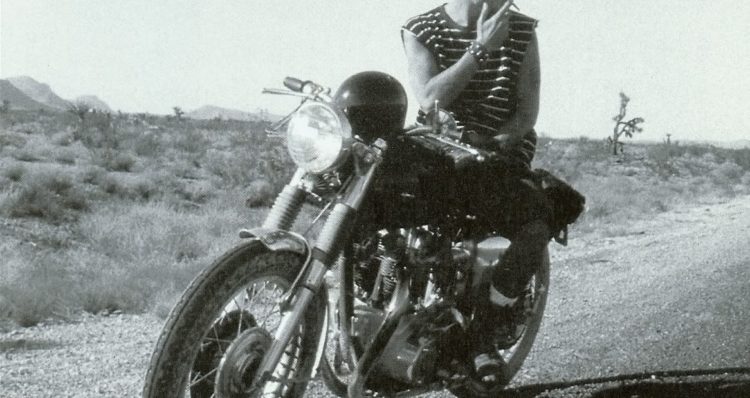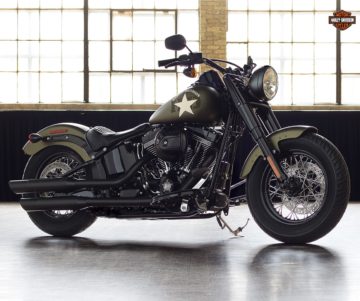
Bikers Who Have Made History
austindoty | August 26, 2020 | 0 | History , Lists , RidingThere have been a number of great achievements by bikers and the marvelous machines they rode. Whether it’s a matter of great distances travelled, speeds never before reached or jumping 15 cars, there are many feats man and machine have achieved. Together, they have left their mark in the annals history. Today we bring you bikers who will forever be remembered and the legacies they’ve left behind.
John Paul “Chief” Lilly

“Chief”, as he was more commonly known, founded Bikers Against Child Abuse (BACA) in 1995. As a trained social worker he established the group and its cause saying it “exists with the intent to create a safer environment for abused children”. His goal was to create a BACA chapter in every neighborhood. Members of these chapters were known as “guardians” and were known to patrol outside the homes of kids who had been molested or abused. They would also ride with them to court hearings, providing protection and solace, and would intimidate – and sometimes even get violent with – anyone who laid a hand on a child in an insidious or abusive manner. Today chapters can be found from Canada all the way to New Zealand.
Evel Knievel

Being one of the more recognizable figures on the list, Knievel made his name by performing death-defying stunts and testing the very limits of the human body. Through the course of his career, he performed over 75 ramp-to-ramp motorcycle stunts and suffered a total of 433 bone fractures, earning him an entry in the Guinness Book of World Records as the survivor of the most broken bones a single lifetime.
Some of Knievel’s most notable stunts include: riding over Caesar’s palace in Las Vegas (1967); jumping 50 smashed cars at the L.A. Coliseum (1973); and attempting to jump over the Snake River Canyon in Twin Falls, Idaho (1974)- only because he couldn’t get permission to jump over the Grand Canyon.
Burt Munro

Burt Munro was a biker from New Zealand whose goal in life was to travel to Utah and ride on the Bonneville Salt Flats with his modified 1920 Indian Scout. After a few years of trial and error, Munro would finally reach the long stretch of salty flats in 1962 and go on to set the 883cc land speed record at 178.95 mph. He would return following years during the 1960s with his Indian Scout, reaching even higher speeds at 190.07 mph and 205.67 mph. He would be inducted into the AMA Motorcycle Hall of Fame in 2006.
Theresa Wallach & Florence Blenkiron

These two women had a number of achievements between them, some they did alone and some together.
Wallach was arguably the only female motorcycle despatch in the entire British army during WWII, as she often refused to take on the “menial” missions that were assigned to women and would volunteer for more dangerous missions. She would also go on to help establish the Women’s International Motorcycle Association in 1950.
Blenkiron was not only the first woman to do the “ton” (going 100 mph for those of us still getting familiar with biker lingo) but was also the first woman to win a gold medal for achieving the high speed.
Together, these two women set out from London in December of 1934 to travel across the Sahara Desert to reach Cape Town, Africa. They would not reach their destination until July of 1935. A month before their arrival, the Woman Engineer Journal would report: “some of their more unpleasant adventures have included four nights in a tropical jungle without food or shelter, and capture by Tourags in the desert”.
Hunter S. Thompson

Usually known as an author more than a biker, Thompson would make his mark on motorcycle history when we would publish his non-fiction novel Hell’s Angels: The Strange and Terrible Saga of the Outlaw Motorcycle Gangs. It told of his time during the 1960s riding with a Northern California chapter of the infamous gang. It was the first time the public eye was able to take a look at the often thought of “menacing” gang. The novel would still cover some pretty unforgivable exploits by Hells Angels, but it also worked to humanize the outlaws and reveal they were real people and could even be empathized with at times.
Thompson’s time with the gang would come to an end by the late 1960s when he chose to insult a biker about the cruel way they treated women. This would result in several members beating and “stomping” the author to a pulp, causing him to flee the gang and begin to work on other projects.
What other historical bikers do you know? Let us know their names and exploits in the comment section below.



